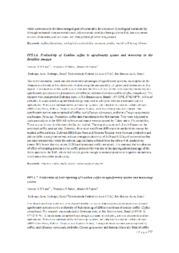Uniformity of fruit ripening of Conilon coffee in agroforestry system and monocrop system.
Uniformity of fruit ripening of Conilon coffee in agroforestry system and monocrop system.
Author(s): LUNZ, A. M. P.; SALES, F. de; MESQUITA, J. F. B. de
Summary: The objective of this work was to evaluate the effect of two coffee cropping systems (monocrop and agroforestry system) on the uniformity of fruit ripening of different cultivars of conilon coffee (Coffea canephora). The research was conducted at Embrapa Acre, in Rio Branco-Acre, Brazil (10º1'30"S, 67º42'18"W).
Publication year: 2014
Types of publication: Abstract in annals or event proceedings
Unit: Embrapa Acre
Observation
Some of Embrapa's publications are published as ePub files. To read them, use or download one of the following free software options to your computer or mobile device. Android: Google Play Books; IOS: iBooks; Windows and Linux: Calibre.
Access other publications
Access the Agricultural Research Database (BDPA) to consult Embrapa's full library collection and records.
Visit Embrapa Bookstore to purchase books and other publications sold by Embrapa.

